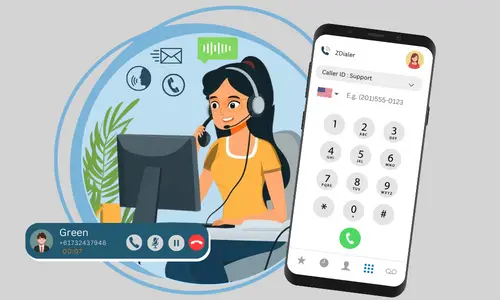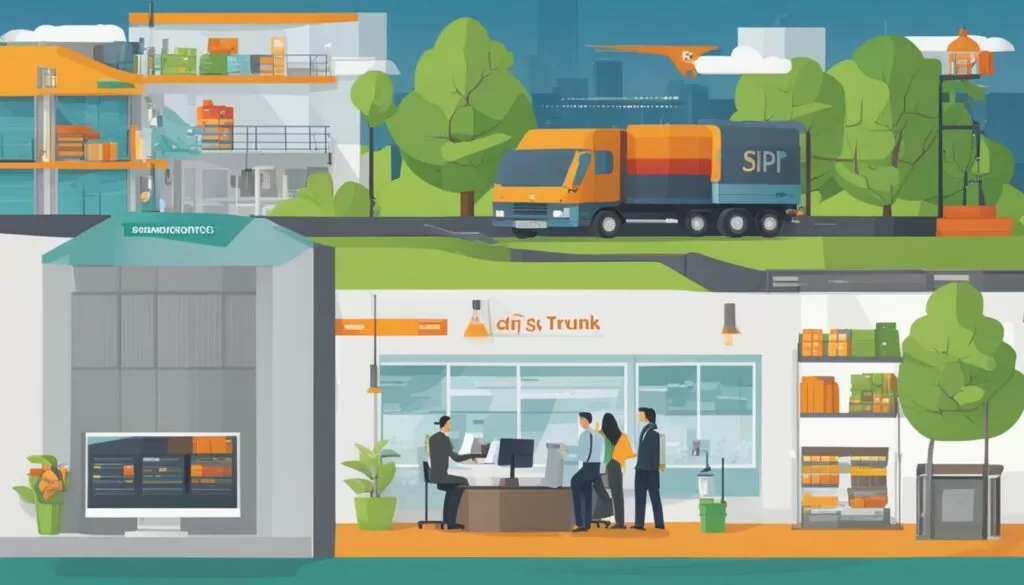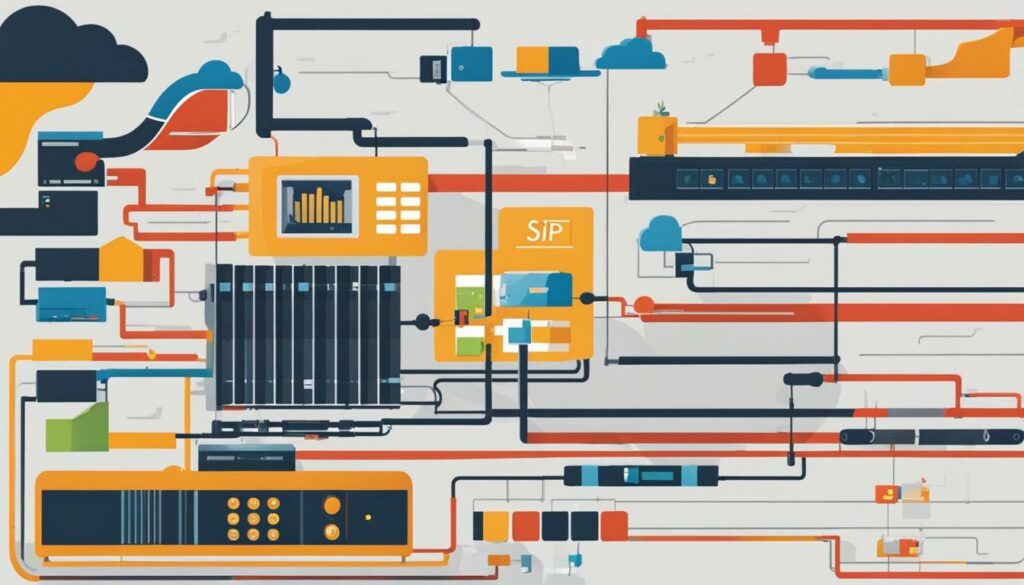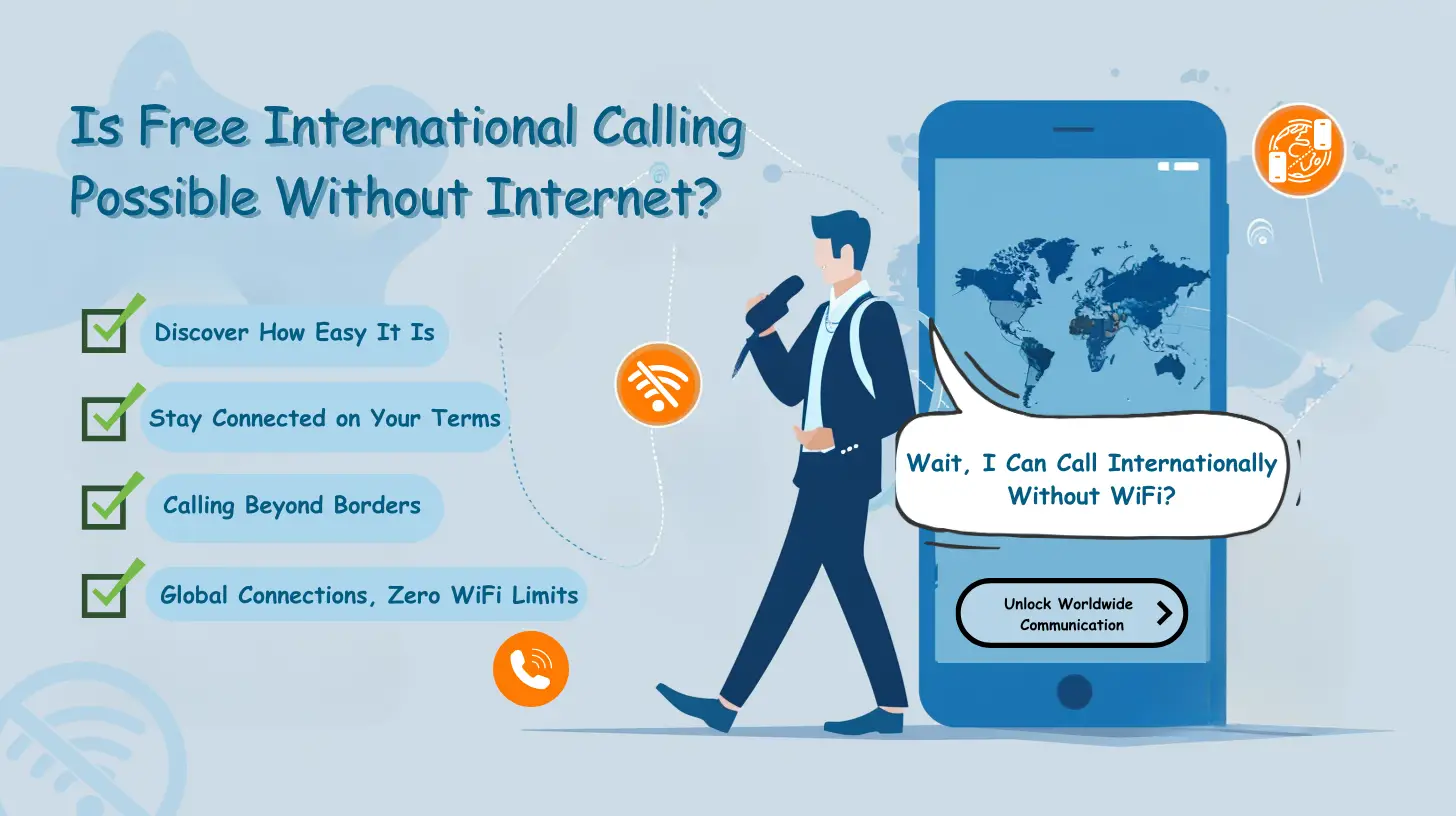Are you curious about the different types of SIP trunks available and how they can enhance your telecommunication experience? Look no further as we uncover the world of SIP trunking services and providers.
SIP trunking is a technology that revolutionizes the way businesses make and receive phone calls. By utilizing the Session Initiation Protocol (SIP), SIP trunks replace traditional phone lines with virtual lines or trunks delivered over an internet connection. This innovative solution offers numerous advantages, including cost savings, scalability, flexibility, and improved reliability.
With SIP trunking, businesses can enjoy a wide range of communication features and real-time analytics that enable better monitoring and optimization of communication patterns. Furthermore, SIP trunking seamlessly integrates with other business systems, enhancing overall efficiency and productivity.
Understanding the different types of SIP trunks and selecting the right provider is crucial for maximizing the benefits of this technology. Factors such as security, real-time analytics, disaster recovery, interoperability, international coverage, and service level agreements play a significant role in choosing the ideal SIP trunk provider for your business.
Key Takeaways:
- SIP trunking is a technology that allows businesses to make and receive phone calls over the internet using the Session Initiation Protocol (SIP).
- Benefits of SIP trunking include cost savings, scalability, flexibility, and improved reliability.
- SIP trunking supports a wide range of communication features and integrates with other business systems.
- Choosing the right SIP trunk provider involves considering factors such as security, real-time analytics, disaster recovery, interoperability, international coverage, and service level agreements.
- Transitioning to SIP trunking is simple and can streamline business operations, eliminate gateways, improve call quality, and seamlessly integrate with CRM platforms.
Now that we have explored the various types of SIP trunks and the significance of choosing the right provider, let’s dive deeper into how SIP trunks work and the benefits they bring to businesses.
Understanding the Basics: How SIP Trunks Work and Their Benefits
Before we explore the different types of SIP trunks, it’s crucial to understand the basics of how SIP trunks work and the range of benefits they offer. SIP trunking is a technology that enables businesses to make and receive phone calls over the internet using the Session Initiation Protocol (SIP). Instead of traditional phone lines, virtual lines or trunks are delivered over an internet connection.
One of the key benefits of SIP trunking is cost savings. With traditional phone lines, businesses are often burdened with hefty line rental fees and per-minute charges. In contrast, SIP trunking allows for unlimited concurrent calls and eliminates the need for multiple physical lines, resulting in significant cost reductions. Moreover, SIP trunking offers scalability by enabling businesses to easily add or remove lines to meet their changing communication needs. This flexibility ensures that businesses can seamlessly accommodate growth without incurring high infrastructure costs.
Another advantage of SIP trunking is improved reliability. Traditional phone lines are susceptible to issues such as line faults or downtime, which can disrupt business operations. In contrast, SIP trunking provides enhanced call quality through technologies like Quality of Service (QoS) protocols. These protocols prioritize voice traffic to ensure optimal call performance and minimize the risk of dropped calls or poor audio quality.
In addition to cost savings and reliability, SIP trunking supports a wide range of communication features. These features include voicemail, call forwarding, auto-attendant, and call recording, among others. Furthermore, SIP trunking integrates seamlessly with other business systems such as customer relationship management (CRM) platforms, enabling businesses to streamline their communication processes and improve overall efficiency.
As you can see, SIP trunking offers numerous benefits for businesses, including cost savings, scalability, flexibility, improved reliability, and advanced communication features. In the next section, we will delve deeper into the factors you should consider when choosing a SIP trunk provider for your business.
Types of sip trunks
- Peer Trunk (DID Based): The ITSP routes calls based on DID number.
- Peer Trunk (Port Based): The ITSP routes calls based on SIP registration port.
- Peer Trunk (Private Network): This trunk type can be used when the ITSP and PBX are in the same private network.
Choosing the Right SIP Trunk Provider: Factors to Consider
Selecting the right SIP trunk provider is crucial for a seamless and efficient telecommunication experience. Let’s explore the key factors to consider when making this important decision.
- Security: Ensure that the SIP trunk provider offers robust security measures to protect your communication data. Look for features like encryption, firewall protection, and network monitoring to safeguard against data breaches and unauthorized access.
- Real-time analytics: Opt for a provider that offers comprehensive real-time analytics to monitor and optimize your communication patterns. This will enable you to gain insights into call volumes, peak hours, and call quality, empowering you to make data-driven decisions for your business.
- Disaster recovery: Consider a provider that has a robust disaster recovery plan in place. This ensures that your communications remain uninterrupted in the event of unforeseen circumstances such as natural disasters or network outages.
- Interoperability: Look for a SIP trunk provider that seamlessly integrates with your existing communication systems and hardware. This allows for a smooth transition and eliminates the need for costly infrastructure upgrades.
- International coverage: If your business operates globally or plans to expand internationally, choose a provider that offers reliable international coverage. Ensure that they have partnerships with local carriers in your target regions to guarantee high-quality and cost-effective international calls.
- Service level agreements (SLAs): Review the SLAs offered by the provider to understand their commitment to uptime, call quality, and customer support. Look for providers that offer robust SLAs, including guarantees for network availability and quick response times for troubleshooting.
By considering these factors, you can make an informed decision when choosing a SIP trunk provider for your business. Remember, finding the right provider will not only ensure a seamless telecommunication experience but also contribute to your business’s overall success.
| Security | Real-time analytics | Disaster recovery | Interoperability | International coverage | SLAs |
|---|---|---|---|---|---|
| Robust security measures | Comprehensive monitoring and optimization | Plan for uninterrupted communication | Seamless integration with existing systems | Reliable coverage for global operations | Strong commitment to uptime and support |
SIP Trunk Provider: My Country Mobile
When it comes to selecting a trustworthy SIP trunk provider, My Country Mobile stands out as a reputable choice in the industry. With a diverse range of offerings, My Country Mobile provides secure and reliable SIP trunking solutions tailored to your business’s specific needs.
Ensuring Security and Reliability with SIP Trunks
Security and reliability are key concerns when it comes to telecommunication systems. Let’s explore how SIP trunks ensure both. SIP trunking, the technology that allows businesses to make and receive phone calls over the internet, incorporates various security measures to protect your communication and maintain a reliable connection.
With SIP trunking, all voice signals are converted into digital packets and transferred securely over the internet using encryption protocols. This ensures that your calls are protected from eavesdropping and unauthorized access. Additionally, Quality of Service (QoS) protocols prioritize voice traffic, ensuring that your calls have the necessary bandwidth and receive the highest level of service quality.
SIP trunking also offers redundancy and disaster recovery options, ensuring that your communication remains uninterrupted even during unforeseen events. Providers often have backup systems and multiple data centers, allowing for seamless failover and continuous service.
By choosing a trusted SIP trunking provider like My Country Mobile, you can be confident in the security and reliability of your telecommunication system. Their advanced infrastructure and commitment to delivering high-quality service make them a reliable choice for businesses of all sizes and industries.
| Security Features | Reliability Measures |
|---|---|
| Encryption protocols | Redundant systems |
| Firewall protection | Multiple data centers |
| Access control | Failover mechanisms |
SIP Trunking vs. Traditional Phone Lines: A Comparison
SIP trunking has revolutionized the way businesses communicate, but how does it compare to traditional phone lines? Let’s explore the key differences and advantages of SIP trunking.
With traditional phone lines, businesses are limited to a fixed number of lines, and scaling up can be costly and time-consuming. SIP trunking, on the other hand, offers scalability that allows businesses to easily add or remove lines as their communication needs change. This flexibility ensures that you only pay for what you need and can quickly adapt to fluctuations in demand.
Another major advantage of SIP trunking is cost savings. Traditional phone lines require separate lines for voice and data, resulting in higher expenses for businesses. SIP trunking consolidates voice and data onto a single network, reducing costs and simplifying management. Additionally, international calling can be expensive with traditional phone lines, but SIP trunking providers often offer competitive rates for global coverage.
| Benefits of SIP Trunking | Benefits of Traditional Phone Lines |
|---|---|
| Cost savings | Established infrastructure |
| Scalability | Reliability |
| Flexibility | Security |
| Improved reliability | Integration with legacy systems |
Moreover, SIP trunking offers improved reliability compared to traditional phone lines. With SIP trunking, businesses can benefit from built-in redundancy and failover systems that ensure business continuity in the event of network disruptions or disasters. Traditional phone lines, on the other hand, rely on physical lines that can be susceptible to damage and outages.
By choosing SIP trunking, businesses can take advantage of advanced communication features, such as video conferencing, instant messaging, and unified communications. These features enhance collaboration and productivity while streamlining communication processes. Additionally, real-time analytics provided by SIP trunking allow businesses to monitor call quality, identify communication patterns, and optimize their telecommunication strategies for better outcomes.
| SIP Trunking | Traditional Phone Lines |
|---|---|
| Advanced communication features | Basic voice calling |
| Real-time analytics | Limited reporting capabilities |
When it comes to choosing between SIP trunking and traditional phone lines, businesses need to consider their individual requirements and priorities. While traditional phone lines may still be suitable for certain organizations, SIP trunking offers numerous benefits in terms of cost savings, scalability, flexibility, improved reliability, and advanced communication features. It’s important to assess your business needs and collaborate with a reliable SIP trunking provider like My Country Mobile to make an informed decision that aligns with your communication goals.
Budget plays a significant role in any business decision. Let’s break down the cost considerations associated with SIP trunking and how it can impact your overall expenses. SIP trunking offers cost savings compared to traditional phone lines, as it eliminates the need for physical lines and reduces long-distance charges. Additionally, SIP trunking allows for scalability, which means you only pay for the number of channels you need, making it a cost-effective solution for businesses of all sizes.
Table 1: Cost Comparison – SIP Trunking vs. Traditional Phone Lines
| SIP Trunking | Traditional Phone Lines | |
|---|---|---|
| Setup Costs | Minimal setup costs for hardware and software | Expensive setup costs for physical lines and equipment |
| Monthly Fees | Flexible pricing based on the number of channels required | Fixed monthly fees for each line |
| Long-Distance Charges | Included or significantly reduced; calls are made over the internet | Higher charges for long-distance calls |
| Add-On Features | Additional features like conferencing and call recording may incur extra costs | Additional features may come at an additional cost |
By choosing SIP trunking, you can also benefit from the flexibility it offers. As your business grows, you can easily add or remove channels as needed, without the delays and costs associated with traditional phone lines. Furthermore, SIP trunking allows for integration with other business systems such as a customer relationship management (CRM) platform, improving efficiency and productivity.
Understanding the pricing structure is essential for effective budgeting. It’s important to consider factors like setup costs, monthly fees, long-distance charges, and any additional features or services you may require. By comparing the costs of SIP trunking with traditional phone lines (as shown in Table 1), you can make an informed decision that aligns with your budget and business needs.
Transitioning to a new telecommunication system may seem daunting, but the process of adopting SIP trunking is simpler than you might think. Let’s explore how it streamlines your business operations and enhances your communication experience.
With SIP trunking, you can say goodbye to traditional phone lines and hello to a more efficient and cost-effective solution. By replacing your outdated infrastructure with virtual lines delivered over the internet, you eliminate the need for physical phone lines and the associated maintenance costs. This streamlined approach allows for easier scalability, as you can add or remove trunks based on your business needs.
One of the key advantages of SIP trunking is its seamless integration with other business systems. By integrating your telecommunication system with your CRM platform, you can gain valuable insights into customer interactions and improve overall communication efficiency. Real-time analytics provided by SIP trunking solutions allow you to monitor call patterns, identify areas for improvement, and optimize your telecommunication strategies.
To ensure a smooth transition, it is crucial to choose a reliable SIP trunking provider. A provider like Aircall offers a bring-your-own-carrier model, providing you with quality coverage worldwide. Their comprehensive service includes security measures, disaster recovery options, and service level agreements, giving you peace of mind and ensuring uninterrupted communication for your business.
Streamline Your Business Communication
By adopting SIP trunking, you can streamline your business operations and enhance your communication experience. With simplified setup and management, improved scalability, seamless integration with other systems, and reliable service, SIP trunking is the future of telecommunication. Experience the benefits for yourself by choosing a trusted provider like Aircall, and take your business communication to the next level.
In today’s interconnected world, a global reach is essential for businesses. Let’s explore how SIP trunking solutions provide international coverage and facilitate global communication. With SIP trunking, businesses can connect with customers and partners worldwide, expanding their reach and exploring new markets.
SIP trunking providers like Aircall offer extensive international coverage, allowing businesses to establish virtual phone lines in different countries. This means that even if your business is based in one country, you can have local phone numbers in multiple countries. By having local numbers, you can provide a familiar and convenient experience for your customers, increasing trust and accessibility.
One of the key advantages of SIP trunking solutions is their ability to make international calling more affordable. Traditional phone lines often incur high costs for international calls, but with SIP trunking, businesses can take advantage of cost-saving features like international calling plans and competitive call rates. This allows businesses to communicate globally without breaking the bank.
| Benefits of SIP Trunking for International Coverage: |
|---|
| 1. Expanded global reach with local phone numbers |
| 2. Enhanced customer experience and accessibility |
| 3. Cost savings on international calls |
| 4. Streamlined global communication |
With SIP trunking, businesses can easily manage their global communication through a centralized platform. This means that whether you have multiple offices in different countries or remote team members scattered across the globe, you can consolidate your communication systems and ensure seamless collaboration.
In conclusion, SIP trunking solutions provide businesses with the international coverage and global reach necessary in today’s interconnected world. By harnessing the power of SIP trunking, businesses can expand their reach, enhance customer experience, save costs on international calls, and streamline global communication.
Analyzing communication patterns is crucial for optimizing your telecommunication strategies. Let’s explore how real-time analytics in SIP trunking solutions can assist in monitoring and enhancing your communication patterns.
With real-time analytics, you gain valuable insights into your communication data, allowing you to make informed decisions and improve your overall business performance. By monitoring metrics such as call volume, call duration, and call quality, you can identify any bottlenecks or issues in your communication processes.
Real-time analytics also provide you with the ability to track call patterns, including peak calling hours, busiest departments, and the success rate of specific campaigns or marketing efforts. This data allows you to allocate resources effectively, optimize workflows, and improve customer service.
| Benefits of Real-Time Analytics in SIP Trunking Solutions | |
|---|---|
| 1. Immediate Insights: | Real-time analytics provide instant visibility into your communication patterns, allowing you to promptly address any issues or capitalize on opportunities. |
| 2. Proactive Monitoring: | By monitoring key metrics in real time, you can proactively identify and resolve any communication issues before they impact your business operations. |
| 3. Better Decision Making: | Access to accurate and up-to-date data enables you to make informed decisions that drive productivity, efficiency, and customer satisfaction. |
| 4. Performance Optimization: | Real-time analytics empower you to identify areas for improvement, optimize call routing, and enhance the overall performance of your communication systems. |
By leveraging real-time analytics in your SIP trunking solutions, you can gain a competitive edge by continuously monitoring and optimizing your communication patterns. With valuable insights at your fingertips, you can make data-driven decisions that lead to improved business outcomes.
In the next section, we will delve deeper into the different aspects of SIP trunking and compare it with traditional phone lines, giving you a comprehensive understanding of the benefits of SIP trunks for your business.
Conclusion: Embracing the Benefits of SIP Trunks for Your Business
Congratulations! You’ve reached the end of our comprehensive guide to SIP trunks. We hope you are now equipped with the knowledge to make informed decisions and embrace the benefits of SIP trunks for your business.
SIP trunking is a technology that allows businesses to make and receive phone calls over the internet using the Session Initiation Protocol (SIP). It replaces traditional phone lines with virtual lines or trunks delivered over an internet connection.
SIP trunking offers several benefits for your business. Firstly, it provides cost savings by eliminating the need for multiple phone lines and reducing long-distance call charges. Secondly, it offers scalability, allowing you to easily add or remove lines as your business needs change. Thirdly, it provides flexibility by enabling you to connect multiple locations and devices to a single trunk. Fourthly, it improves reliability by leveraging the reliability of your internet connection and offering redundant options for disaster recovery.
Furthermore, SIP trunking supports a wide range of communication features, such as call forwarding, call recording, and voicemail. It also integrates seamlessly with other business systems, such as customer relationship management (CRM) platforms. With real-time analytics, you can monitor communication patterns, identify areas for improvement, and optimize your telecommunication strategies for better business outcomes.
When implementing SIP trunking, it’s essential to choose a reliable provider like My Country Mobile. Consider factors like security, real-time analytics, disaster recovery capabilities, interoperability with your existing systems, international coverage, and service level agreements. A trusted provider will ensure that your communication is secure and efficient, enabling your business to thrive.
In conclusion, SIP trunking is a superior alternative to traditional phone lines. It offers cost savings, scalability, flexibility, improved reliability, and a wide range of communication features. By embracing SIP trunks, your business can enhance its communication capabilities and streamline operations. So why wait? Start exploring SIP trunking solutions today and take your business communication to the next level!


































